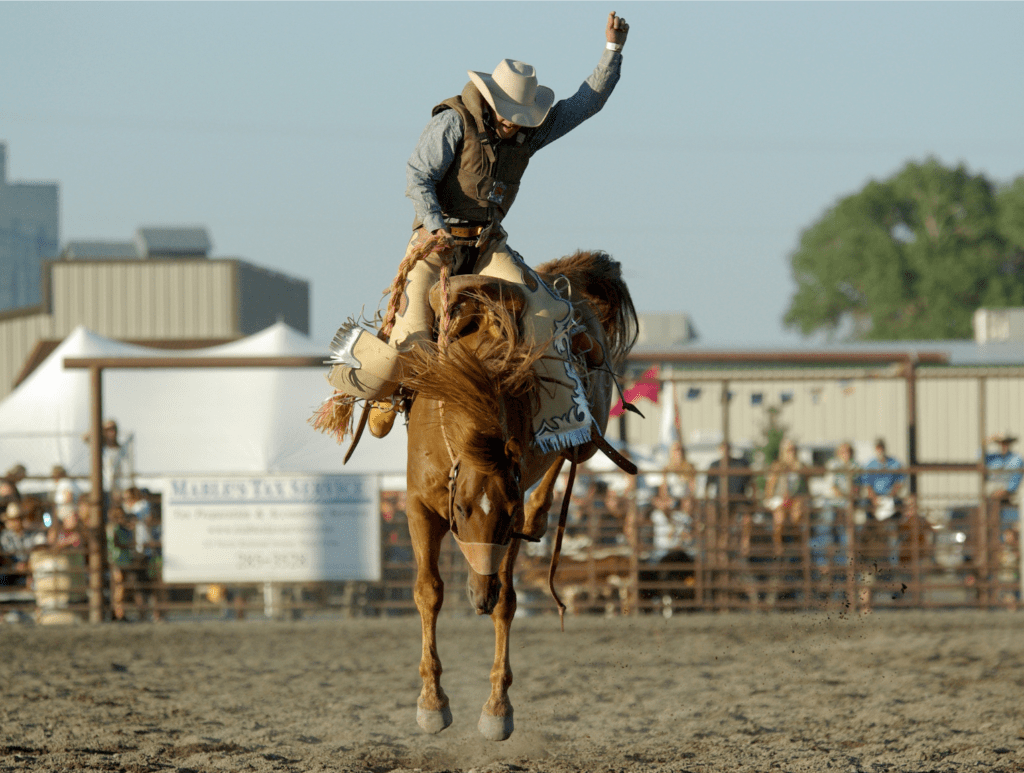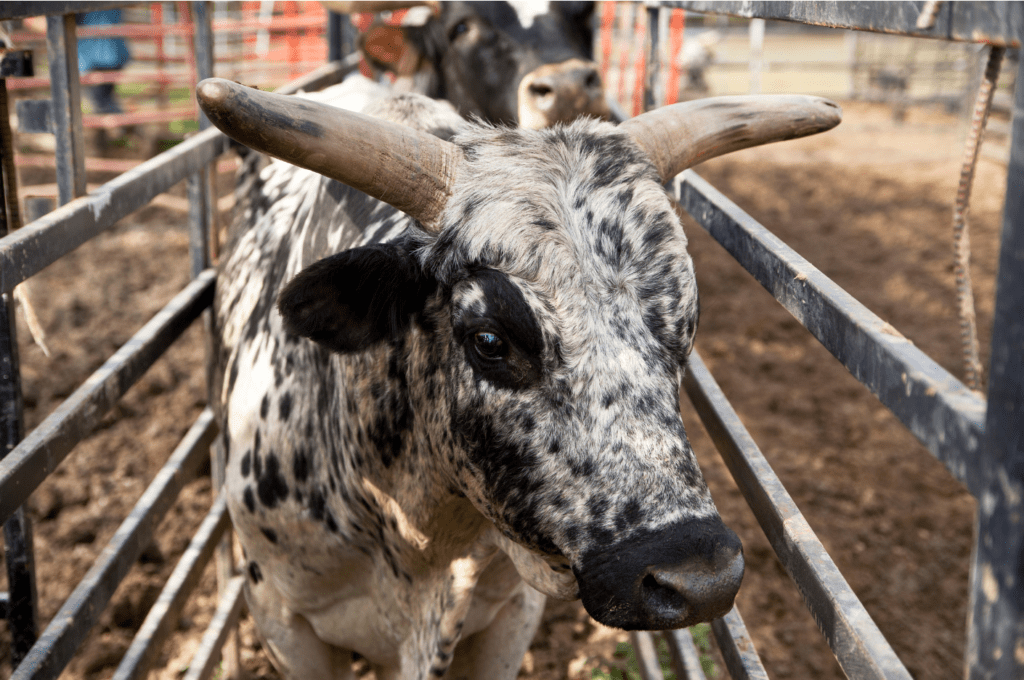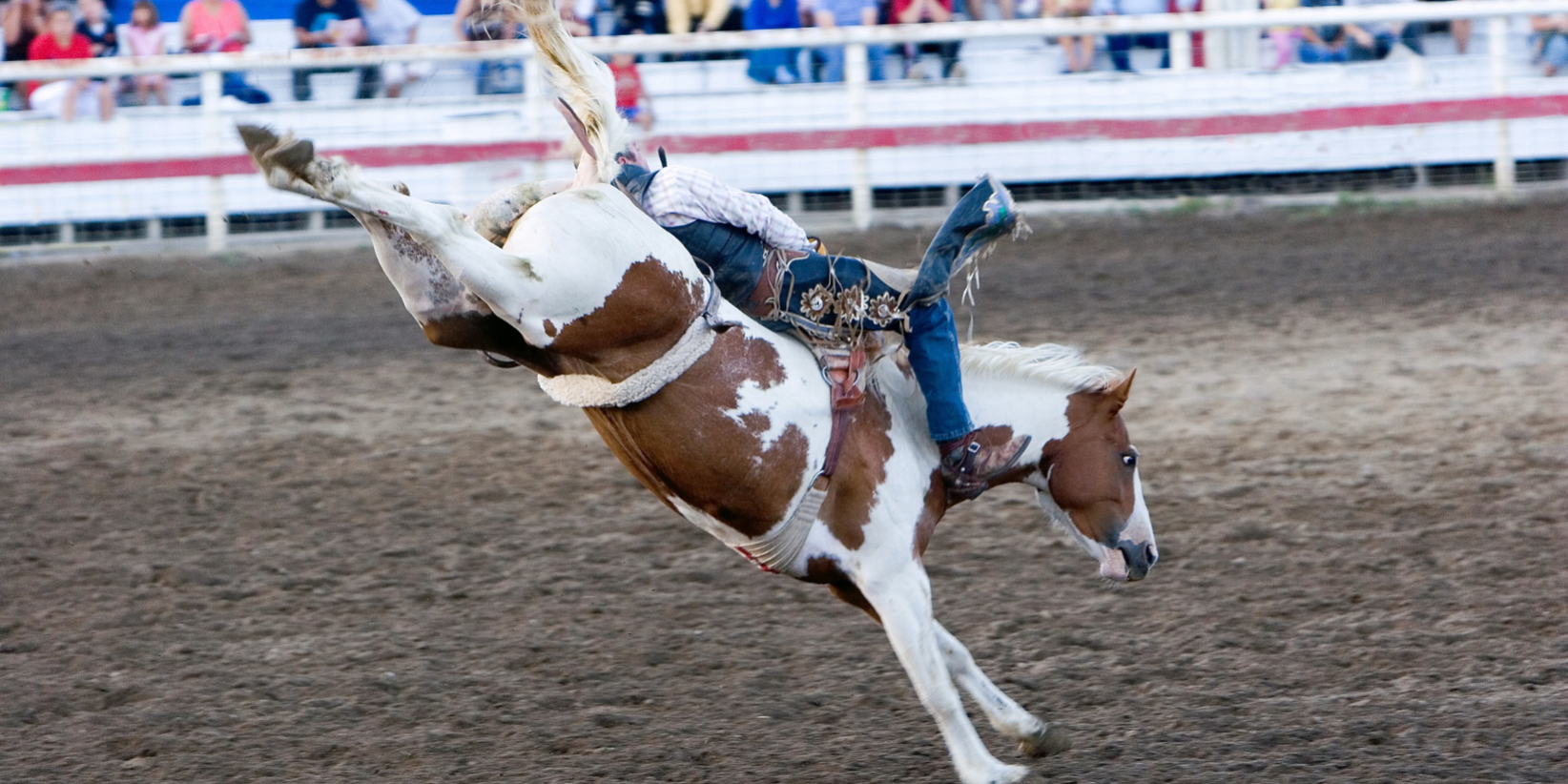Rodeo is important to the preservation of western heritage in the United States and has over 40 million dedicated fans that attend events in person and watch on television. If you’ve ever seen or been to a rodeo, you might be wondering, “How are rodeo animals treated?” Let’s find out!
Animal welfare is at the top of the list in professional rodeo. Similar to an athlete, these animals can only do their jobs if they are healthy and in top condition.
Animal welfare in rodeo
The Professional Rodeo Cowboys Association (PRCA), has over 60 animal welfare rules to ensure animals are receiving the best care and treatment. Animal welfare rules have been in place since 1947. Here are just a few of the rules in place to keep animals safe:

- A veterinarian is on-site at all rodeos to evaluate animals and be there in case of any accident.
- Animals are inspected prior to their participation. If an animal is ill, lame, sore, or injured, it will not be allowed to participate.
- No excessive roughness or abuse of an animal is tolerated on the grounds.
- Animals can never be given any type of stimulant or hypnotic.
- If spurs are used, they must be dull.
- Flank straps used for bucking horses are fleece- or neoprene-lined and those for bulls are made of soft cotton rope and may be lined with fleece or neoprene.
- Steers used in roping events have a protective covering placed around their horns.
Individuals found to be in violation of the numerous welfare rules will be disqualified, fined, and even asked to leave the premises.
The American Veterinary Medical Association found in a survey of PRCA rodeos that only 0.00041% of animals involved in rodeo become injured. This is less than one in 2,500 animals.
PRCA judges are also trained in ensuring rules are followed and receive continued training in animal welfare. In addition, the PRCA has several veterinary advisory panels that oversee and ensure animal welfare efforts are being furthered. The PRCA even has an animal welfare committee dedicated to the treatment and care of rodeo animals.
Similar to the PRCA, the Women’s Professional Rodeo Association (WPRA) has a set of rules governing prohibited substances, unsafe arena conditions, injuries to people and animals and more. The WPRA also has free equine wellness resources that help keep equine athletes heathy.

What about bucking stock?
Animals used in roughstock events (bareback broncs, saddle broncs, and bulls), tend to naturally buck. These animals are bred for generations to buck. Essentially, it’s these animals’ job and they enjoy it. You can’t “make” these animals buck, they have to want to do it. This is why you will often see an animal stop bucking or drastically slow down when they hear the 8-second timer signifying that their job is done.
One common misconception is that flank straps are tightly pulled around an animal’s abdomen or genitals to upset them and encourage bucking. The truth is flank straps are placed loosely around the animal’s abdomen and never the genitals. If the strap were pulled tight it would restrict the animal’s movement, which is the opposite of what is asked of bucking stock. These flank straps come off easily and act as an indicator to the animals that it is time to perform.
Thanks to proper animal care and management, roughstock are able to participate in rodeos for a long time. The 2022 National Finals Rodeo (NFR) roughstock list includes many horses that have been performing in rodeos for 10 years!
Animal care during events

The NFR is an important event popular among rodeo fans and takes place for 10 nights in Las Vegas every December. The 500+ animals that are brought to the event receive the best care, including their choice of feed, exercise time throughout the day, large individual pens, vet checks three times per day, fresh and clean water daily, and time to rest. To learn more about how animals are cared for during the NFR, read this article.
One final thing to consider about rodeo is the people involved. For the stock contractors and athletes competing at rodeos, these animals are their livelihood. They have no reason to mistreat or abuse the animals involved. Many of these individuals have been a part of rodeo their entire lives and have an enormous amount of respect for the animals that make their sport possible. Often, a love for the animals is the reason athletes choose to compete in rodeo. Without well-treated animals that receive proper care, rodeo would not be able to provide entertainment to fans or provide a living to those who live and breathe it.
All posts are the opinion of the author and do not necessarily represent the view of the Animal Ag Alliance.







